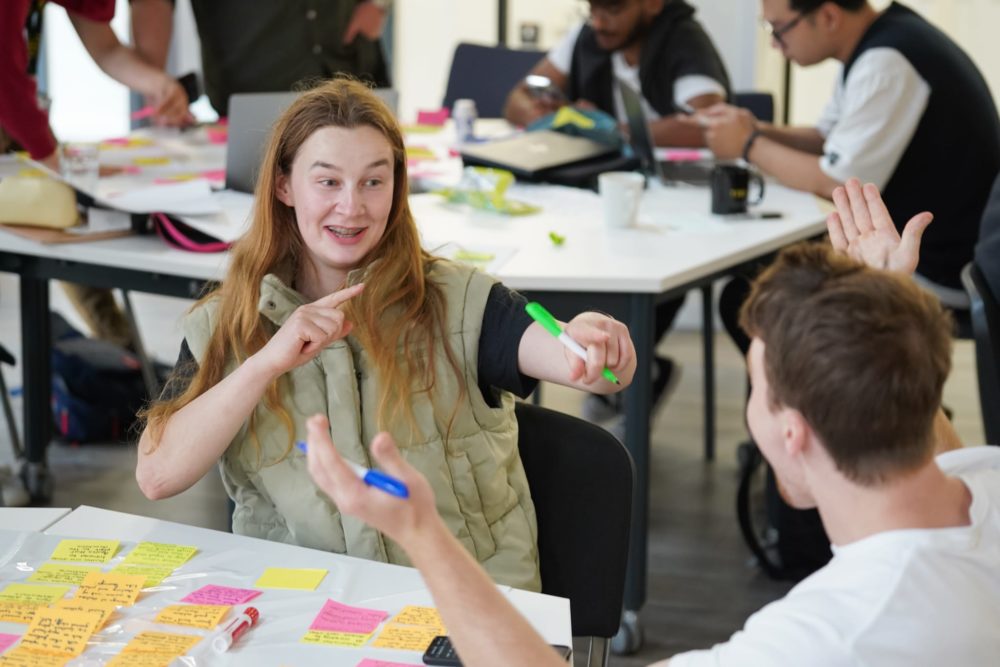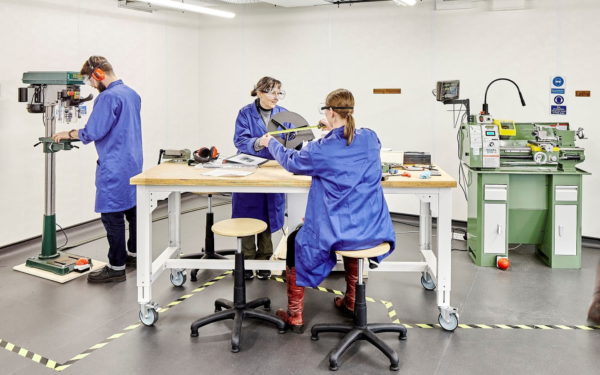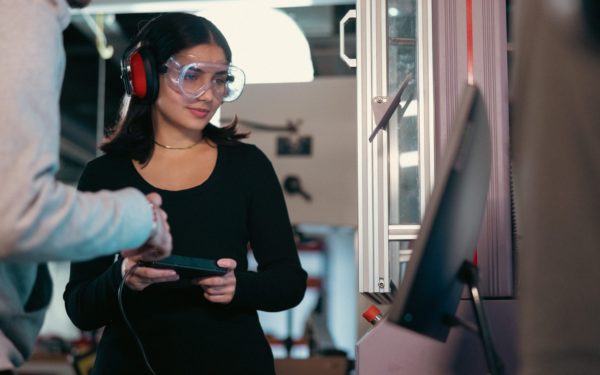
Ideation techniques for engineering students

At TEDI-London, we’re always looking to push the boundaries of what engineering education can be. We recently sat down with Dr Matt Thompson, one of our Assistant Professors, to discuss his recent research project with Dr Sam Fishlock into ideation techniques, and how these practices are being embedded in the TEDI-London classroom. He explores how new methods can help engineering students unleash their creativity—an essential skill for the problem-solvers of tomorrow.
Why rethink brainstorming?
While traditional brainstorming has its merits, it can sometimes limit creativity rather than spark it. “When you bring everyone into a room for a traditional brainstorm, it often leads to groupthink,” Dr Thompson explains. “That’s why we’re exploring other techniques like Design Heuristics and Systematic Inventive Thinking (SIT). These approaches challenge students to think beyond the obvious and help them discover unexpected solutions.”
He explains that these new frameworks allow students to explore ideas in a structured yet flexible way. “It’s not about rejecting brainstorming entirely, but rather about expanding our toolkit. By moving beyond the usual methods, we’re helping our students unlock their creative potential,” Dr Thompson adds.
Learning from other disciplines
Dr Thompson notes that engineering has much to learn from creative arts and design programmes. “Engineering has traditionally focused on structured methods, like morphology analysis, but there are so many other ways to inspire ideation. When we borrow techniques from other fields, like design, we see students engaging in fresh, exciting ways,” he says.
TEDI-London students have responded enthusiastically to these methods, “They loved experimenting with different frameworks. It’s empowering for them to see that engineering doesn’t have to fit into a single box.”
Using artificial intelligence as a creative roadmap
An emerging ideation technique is the use of AI, which Dr Thompson believes will be a game-changer. “AI tools like DALL-E allow students to explore ideas and even test them out quickly,” he says. “AI is a partner in the ideation process. It can visualise concepts, offer suggestions, and even act as a sounding board to refine ideas.”
Dr Thompson sees AI as a powerful tool for helping students break through creative roadblocks. “It’s not just about making things faster; it’s about expanding what’s possible. AI helps students approach problems from new angles, which is crucial for innovation.”
New techniques to generate new ideas
With the UK facing a growing need for engineers, TEDI-London is focused on preparing graduates who can think differently and solve complex challenges. “We need engineers who can bring fresh ideas to the table. Our students are going to be those voices, ready to tackle problems that don’t even exist yet,” Dr Thompson shares.
This research is helping to shape a new generation of engineers who are ready to meet the future head-on, with a toolkit that includes not just technical know-how but also the creative skills to make a difference.
Learn more about studying Global Design Engineering at TEDI-London.
More News articles


5 reasons to study general engineering
